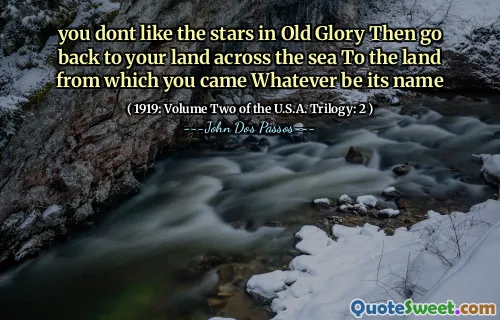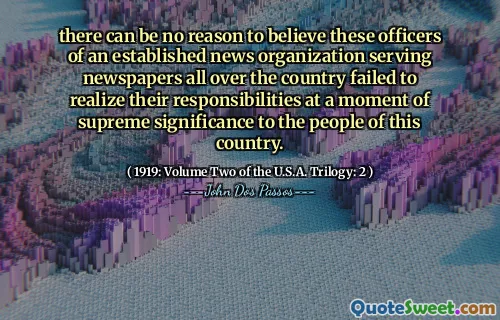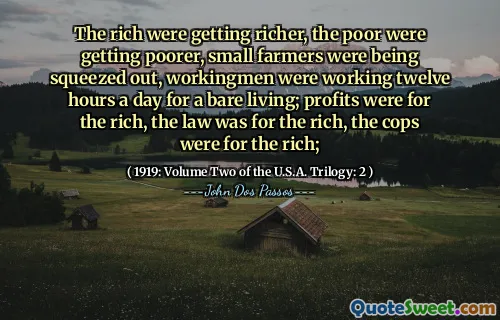"1919: Volume Two of the U.S.A. Trilogy" is a significant work by John Dos Passos, continuing the narrative from the first volume with a focus on the tumultuous events of the year 1919. The book delves into the profound social and political changes occurring in America after World War I, showcasing the struggles and aspirations of various characters. It offers a vivid portrayal of the cultural landscape, touching on themes of industrialization, disillusionment, and the impact of the war on society.
The narrative is innovative, employing a mix of fiction, real-life historical figures, and modernist techniques. Dos Passos utilizes the "camera eye" method, creating fragmented glimpses into the lives of different Americans, reflecting the era's chaos and the search for identity. This technique allows readers to engage deeply with the characters, who are emblematic of the broader American experience during this transformative period.
Ultimately, "1919" stands as a powerful exploration of the American spirit in a time of crisis. Dos Passos critiques capitalism and the American Dream, while also highlighting the resilience and diverse voices of the American populace. The book is both a historical document and a work of art, illustrating the complexities of life in the United States in the aftermath of a world-altering conflict.
More »
Today Birthdays
1943 -
Sam Shepard
1957 -
Daniel Gilbert
1926 -
John Berger
1967 -
Jen Lancaster
1965 -
Atul Gawande
1855 -
Eugene V. Debs
1980 -
Clay Clark
1893 -
Raymond Loewy
1983 -
Alexa Chung
1857 -
Ida Tarbell
1988 -
Virat Kohli
1955 -
Kris Jenner
1920 -
Douglass North
1939 -
Lobsang Tenzin
1961 -
Alan G. Poindexter
1976 -
Ben Quayle
1892 -
John B. S. Haldane
1971 -
Jonny Greenwood
1940 -
Ted Kulongoski
1918 -
George A. Sheehan
1931 -
Ike Turner
1948 -
Peter Hammill
1967 -
Judy Reyes
1949 -
Rick Smolan
1960 -
Tilda Swinton
1965 -
Famke Janssen
1955 -
Jay S. Walker


